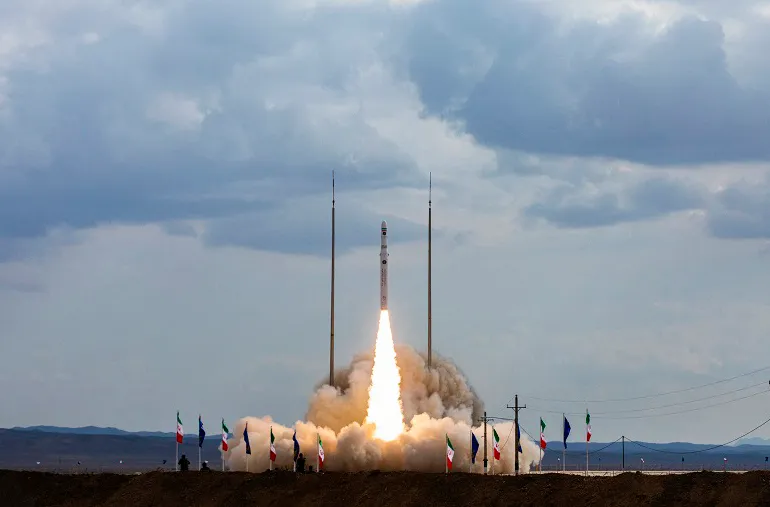Iran has successfully launched a research satellite into orbit using a rocket developed by the Revolutionary Guards, as reported. This achievement comes amid allegations from the United States and European countries that Iran has been supplying ballistic missiles to Russia for its ongoing conflict with Ukraine, claims Iran has denied.
The Chamran-1 satellite was placed into a 550-kilometer (340-mile) orbit by the Qaem-100 satellite carrier, with initial signals confirmed. The Qaem-100, a solid-fuel carrier, was designed and built by the Aerospace Force of the Revolutionary Guards.
Weighing 60 kg (132 pounds), the Chamran-1 satellite is intended to test hardware and software systems for orbital maneuvering, including height and phase adjustments. State media reported that the mission also involves evaluating the cold gas propulsion subsystem and the performance of navigation and attitude control systems.
In January, Iran announced the successful launch of the Sorayya satellite into a 750 km orbit, marking the highest orbit achieved by the country to date.
The U.S. military has raised concerns that Iran’s long-range ballistic technology used for satellite launches could potentially facilitate the development of long-range weapons, including nuclear warheads. However, Tehran denies these claims, asserting that its satellite program is not a cover for ballistic missile development and that it has no interest in pursuing nuclear weapons.
Iran has one of the largest missile programs in the Middle East and has faced several failed satellite launches in recent years due to technical issues.
Earlier in the year, Iran successfully launched its domestically developed Pars 1 imaging satellite from Russia using a Soyuz rocket, aiming to capture topographical data from an orbit of 500 km. On January 28, Iran also launched three satellites with its Simorgh rocket to an orbit of 450 km to test communication and geopositioning technologies.










